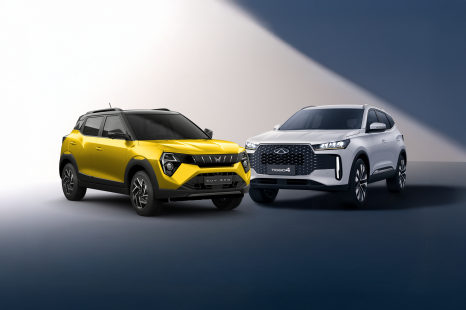

Andrew Maclean
2025 Mahindra XUV 3X0 vs Chery Tiggo 4: Spec battle
1 Month Ago
Hyundai's electric SUV hero remains a handsome, comfortable crossover. But patience is a virtue, and we'd be waiting for the updated version.
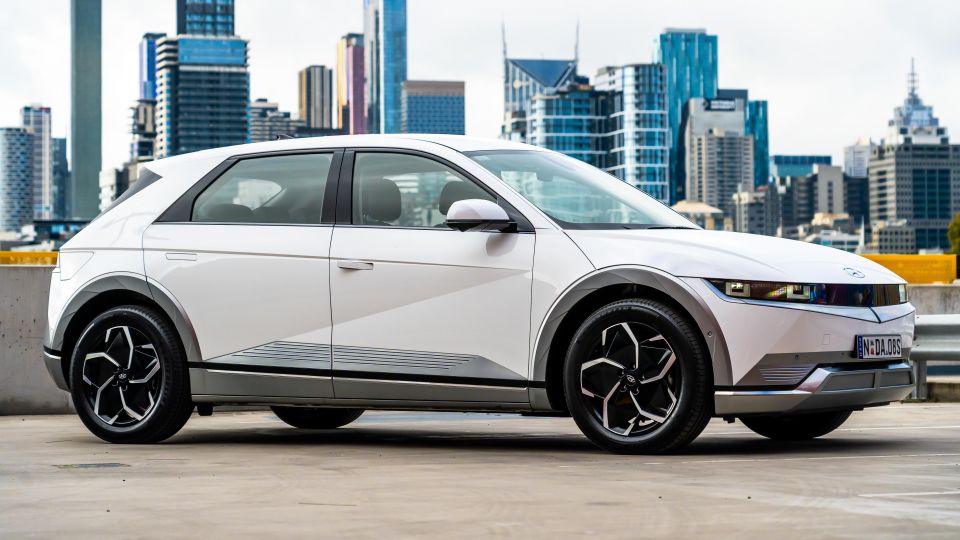
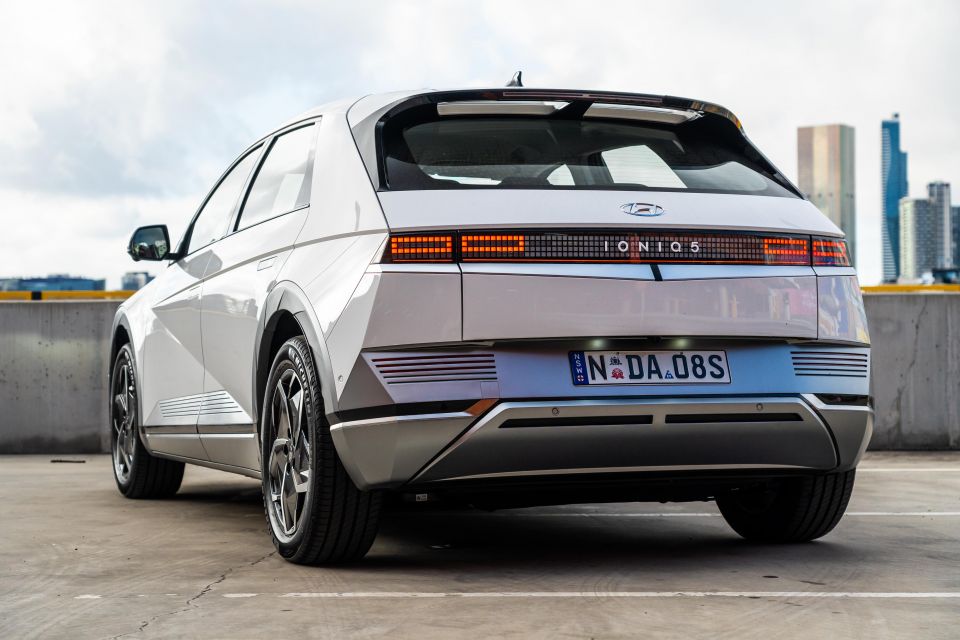

Quickly see how this car stacks up against its competition. Select any benchmark to see more details.
Where expert car reviews meet expert car buying – CarExpert gives you trusted advice, personalised service and real savings on your next new car.
Hyundai’s electric hero is due for an update.

A new Ioniq 5 is coming to Australia later in 2024 with an updated interior, new technology, and more range in some cases, along with design tweaks designed to make it look even less like an SUV, and more like an oversized hatchback.
But the update isn’t here just yet – and what doesn’t appear set to change is the fundamental makeup of the base 2024 Ioniq 5 Standard Range on test.
The 2025 model will have the same 53kWh (usable) lithium-ion battery pack as the example you see here, along with the same electric motor on the rear axle. That means range should stay roughly the same, as should performance.
Is it worth holding out for an update, or snapping up the current model before it’s gone?
The base Ioniq 5 on test here and the Extended Range RWD were hit with a minor price rise earlier in 2024.
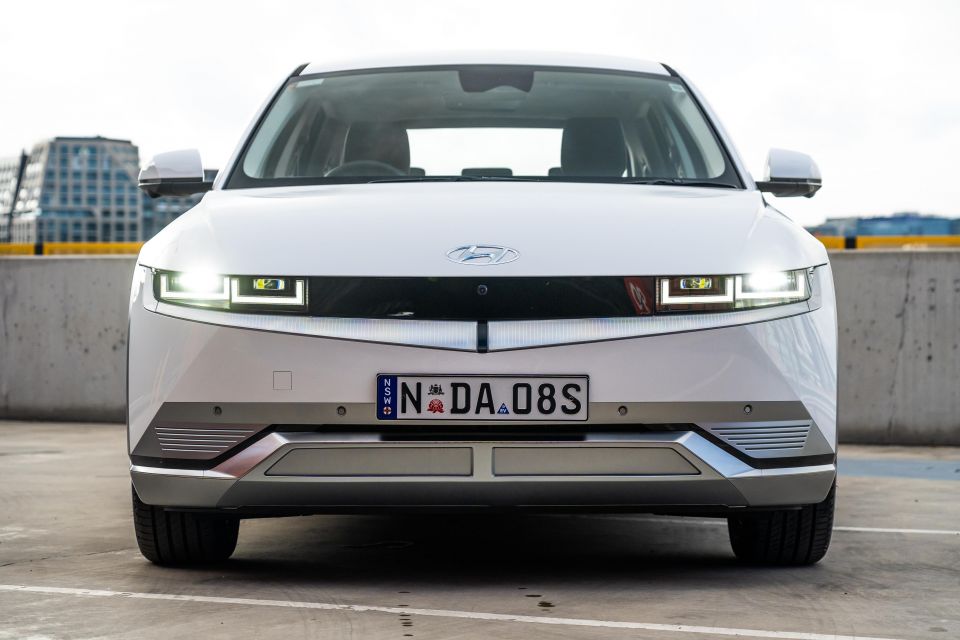
| Model | $RRP |
|---|---|
| 2024 Hyundai Ioniq 5 Standard Range RWD | $65,000 |
| 2024 Hyundai Ioniq 5 Extended Range RWD | $71,000 |
| 2024 Hyundai Ioniq 5 Dynamiq Extended Range RWD | $76,000 |
| 2024 Hyundai Ioniq 5 Epiq Extended Range RWD | $79,500 |
| 2024 Hyundai Ioniq 5 Dynamiq Extended Range AWD | $80,500 |
| 2024 Hyundai Ioniq 5 Epiq Extended Range AWD | $84,000 |
Prices exclude on-road costs
To see how the Hyundai Ioniq 5 compares with its rivals, use our comparison tool.
Buy your new car without the stress. It's fast, simple and completely free.

Great service from Travis and team, second time I have used this business would not hesitate to recommend them to anyone
Craig C.
Purchased a Ford Ranger in Sunshine Coast, QLD
CarExpert helped Craig save $7,224 on his Ford Ranger, now let us save you on your next new car.
Get your BEST priceThere are some familiar Hyundai parts in the Ioniq, but the design is eye-catching.
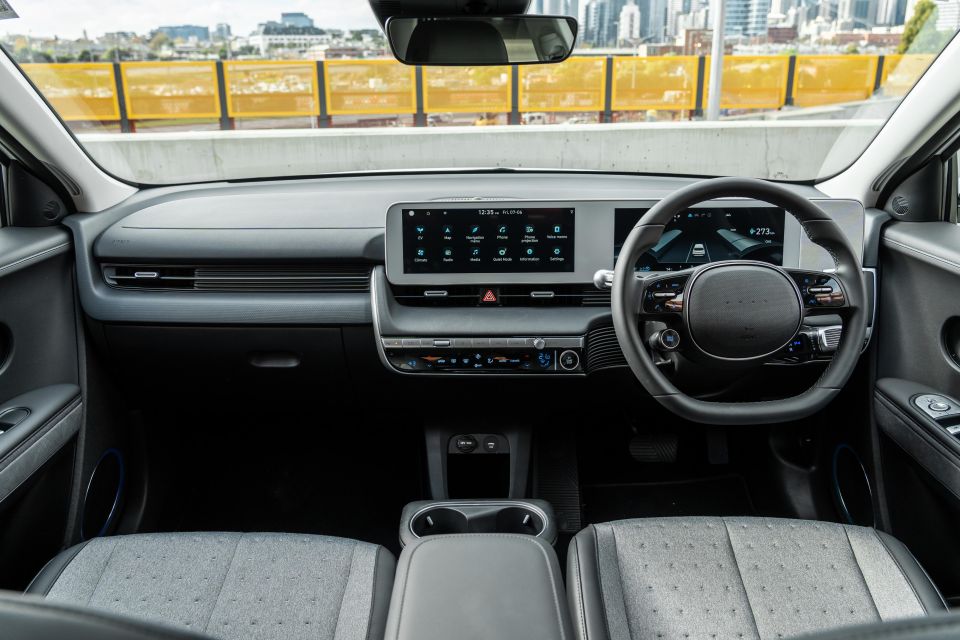
With a low scuttle and simple layout, it feels more like a lounge than a normal mid-sized SUV from behind the wheel. The white and grey colour scheme might not sound exciting on paper, but it looks upmarket in practice, and is unlike anything else available in the Hyundai Australia range.
Even the steering wheel is unbranded; the two-spoke unit instead has four dots in its centre. Hyundai has gone to great lengths to give the Ioniq brand a bit of breathing space from the rest of its lineup, and it has worked.
The sense of space is palpable, thanks in no small part to the flat floor and Palisade-aping wheelbase afforded by the E-GMP dedicated electric platform.
This base model does miss out on a few things, however. The console on the floor where the transmission tunnel would sit doesn’t slide here but does in higher-end models, while the passenger seat isn’t electrically adjusted.
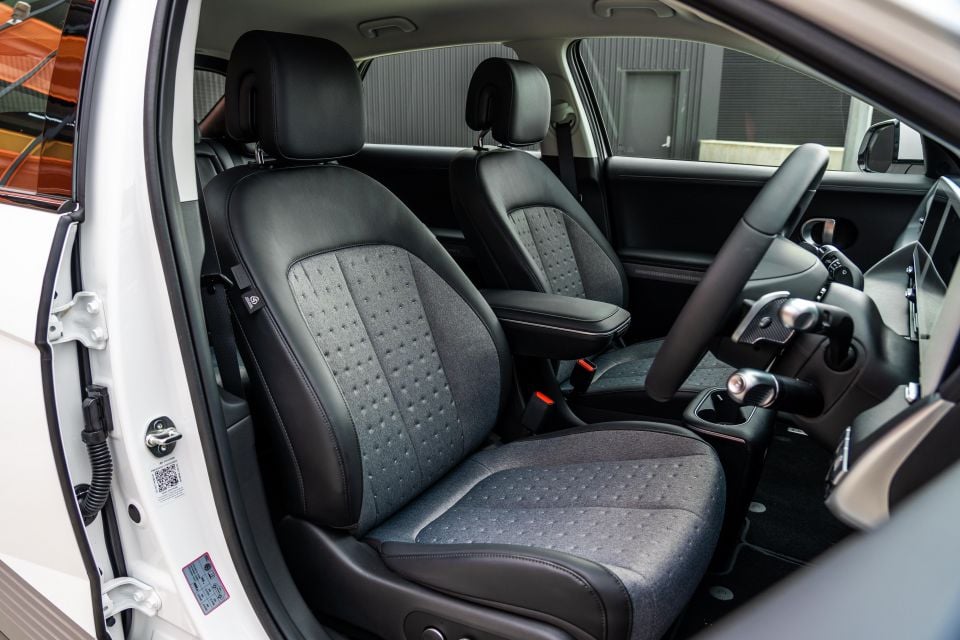
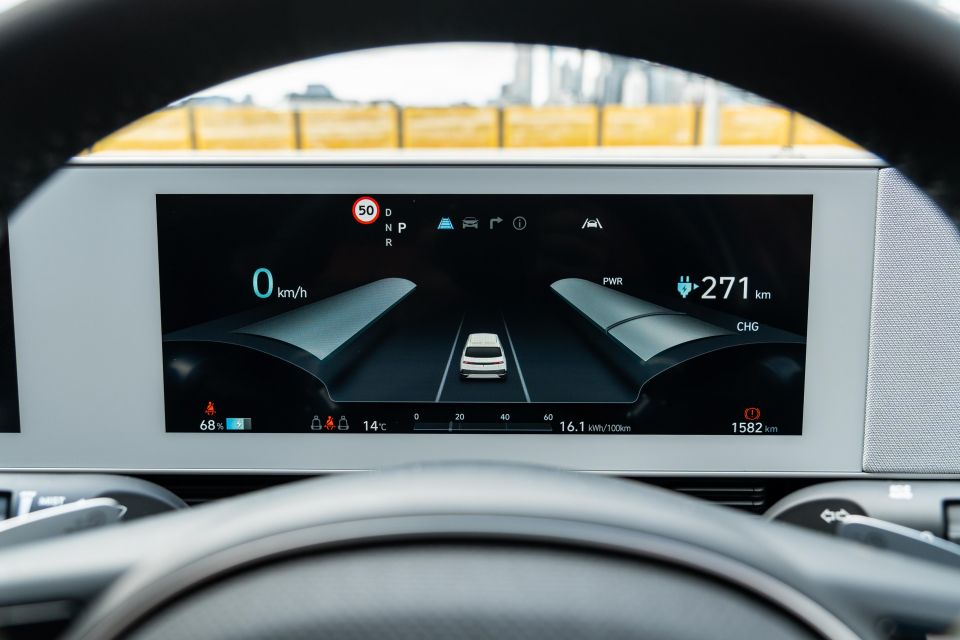
Gone is the leather, replaced with warm cloth. It still feels like a high-end space, but it’s worth considering what comes standard in the sub-$60k base Tesla Model Y… because it makes a manual passenger seat, cloth trim, and a lack of seat heating feel a bit stingy.
You’re not going to be short of places to store things, between the massive under-dash pocket, drawer-style glovebox, and console between the front seats. It has space for a big handbag at its base, along with a padded under-arm space, a wireless phone charger, and two USB ports.
Hyundai hasn’t followed most of its rivals to offering more modern USB-C ports in its tech flagship, and the only port that supports smartphone mirroring is a long way from the driver rather than in the central space.
It’s annoying, given most modern smartphones come with a USB-C cable – although we’d wager most owners will end up just buying a cable and leaving it in the car. It’ll also be rectified with the 2025 update coming later this year.
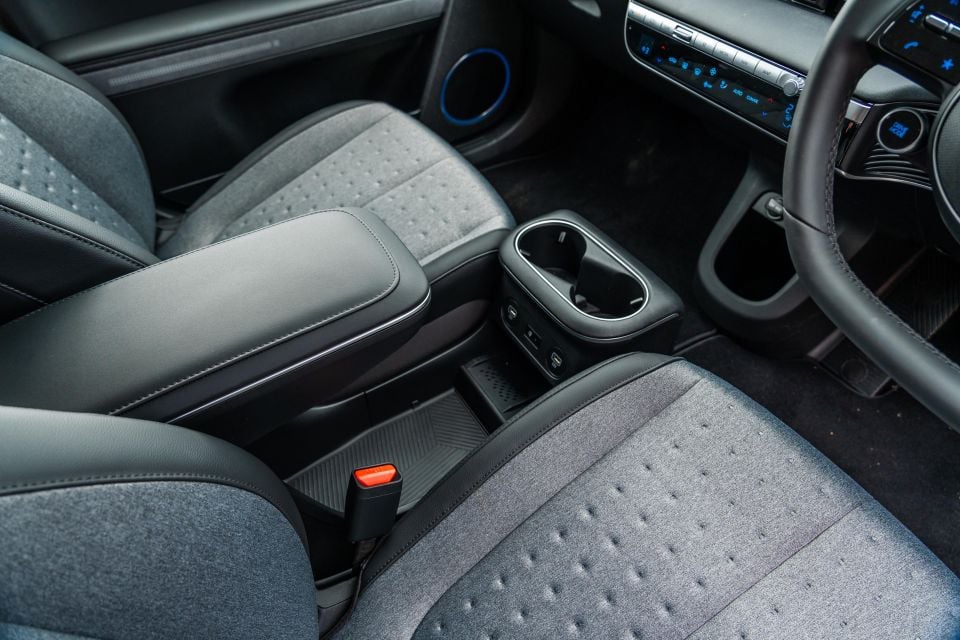
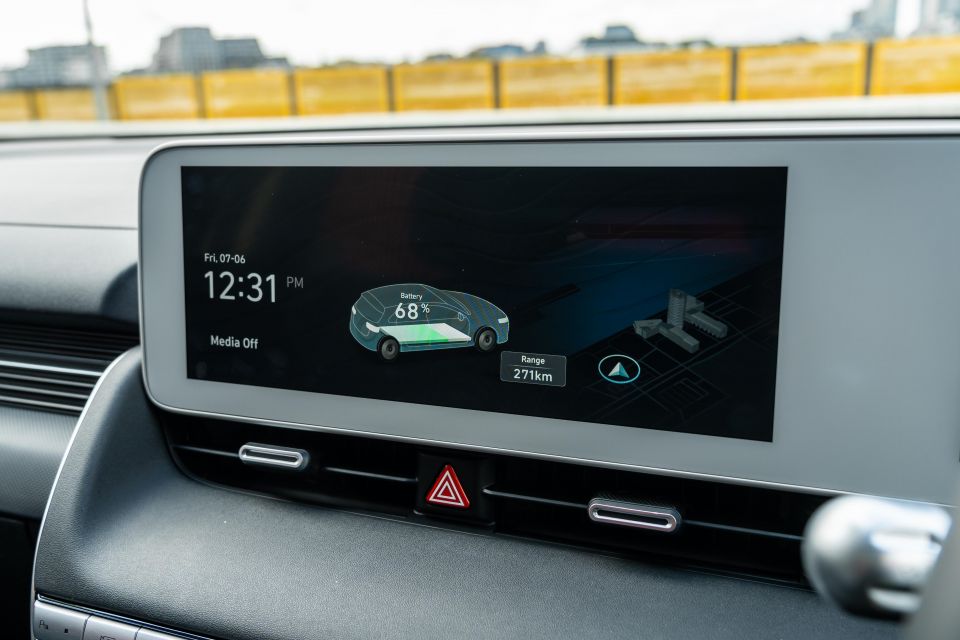
Although it’s housed in a slick-looking white surround, the infotainment system is a very minor reskin of the setup you get in essentially every other Hyundai or Kia before the EV9 debuted the new-gen ccNC system.
It’s mounted a long way from the driver, which makes reaching its corners hard even if you have long arms like me, but most of the menus are easy to work out on the move.
The shortcut buttons at its base are handy, but it would be good to see more electric-specific content baked into the navigation.
Finding a charge station requires diving through a POI menu, for example, and it’s odd the car silhouette you see at startup isn’t an Ioniq 5. Instead it’s an i30 Hatch with a battery graphic.
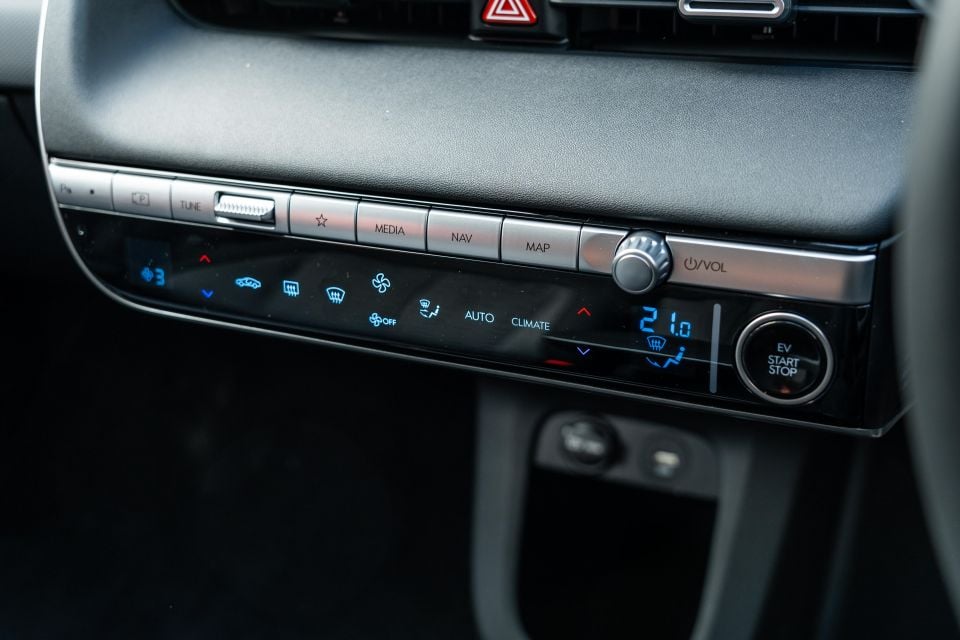
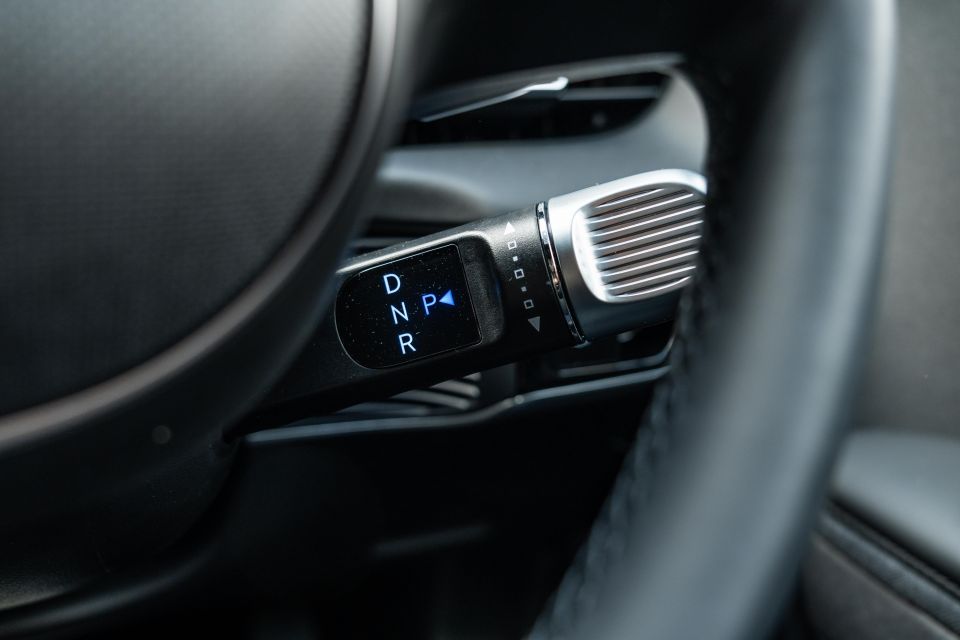
These sound like small things, but they point to the fact the level of time and effort poured into differentiating the exterior hasn’t been matched by the team responsible for the infotainment. It’s functional and full-featured, but it’s also more normal than the rest of the car.
Likewise the digital instrument cluster, which can’t display live maps – and alongside the extremely polished technology in a Tesla or Polestar, for example, looks a bit basic.
Beneath the touchscreen is a climate control pod with capacitive controls. It’s better than having no proper climate controls, but you need to dig into the touchscreen to control minor functions that would still be better served with real buttons.
Rear seat space is in line with a conventional mid-sized SUV, which is to say you get space for adults behind adults. Headroom is excellent, and there’s plenty of legroom for leggy teenagers back there.
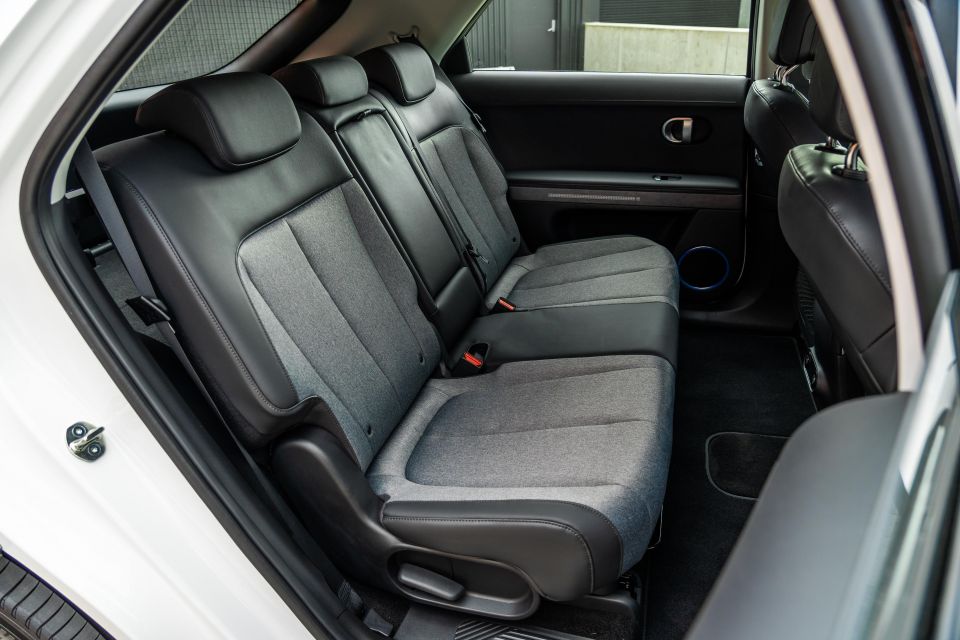
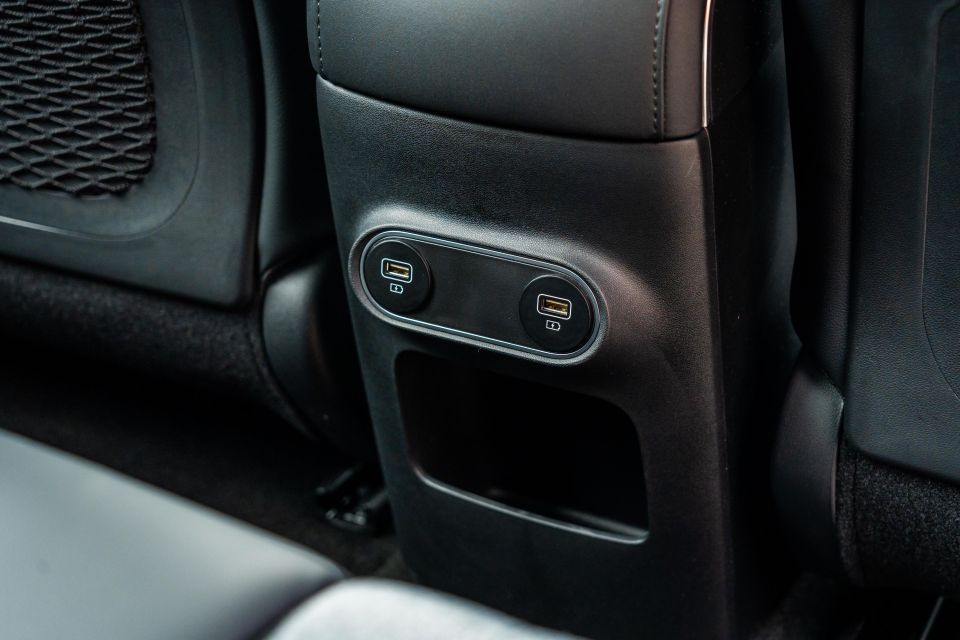
The air vents are located at face level in the B-pillars to accomodate the storage space up front, and you get a fold-down central armrest, spacious door pockets, and map pockets. There are two ISOFIX and three top-tether points for child seats.
On paper, the 527L boot sounds spacious. In reality, it’s a bit limited by the angular roofline and high floor.
It’ll swallow big suitcases or golf clubs comfortably, but the gap between the floor and luggage blind is slim, and most of the underfloor storage isn’t huge.
There’s space for your charge cables under the bonnet as well, although it’s not a Tesla-rivalling frunk.
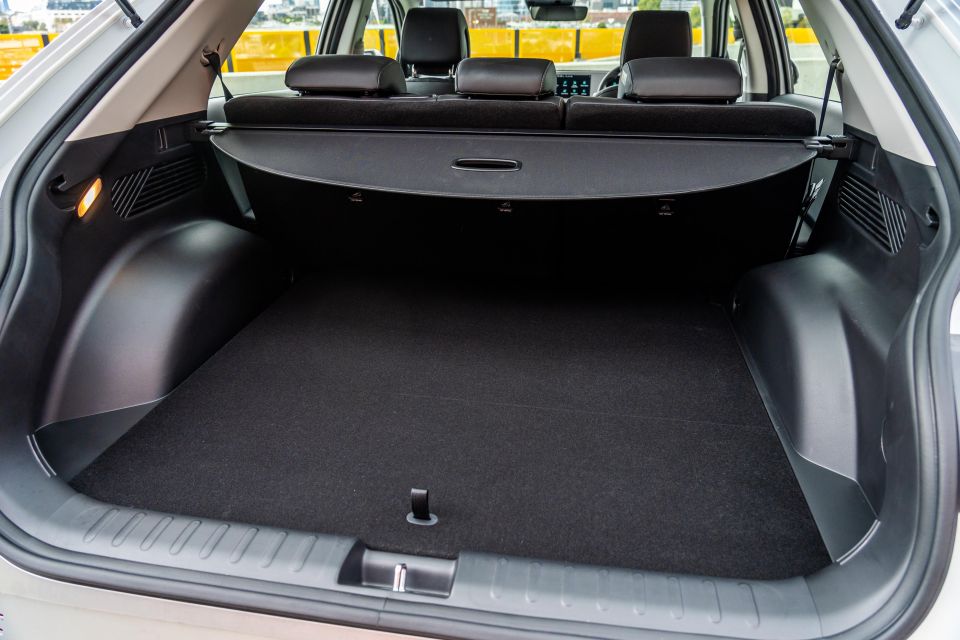
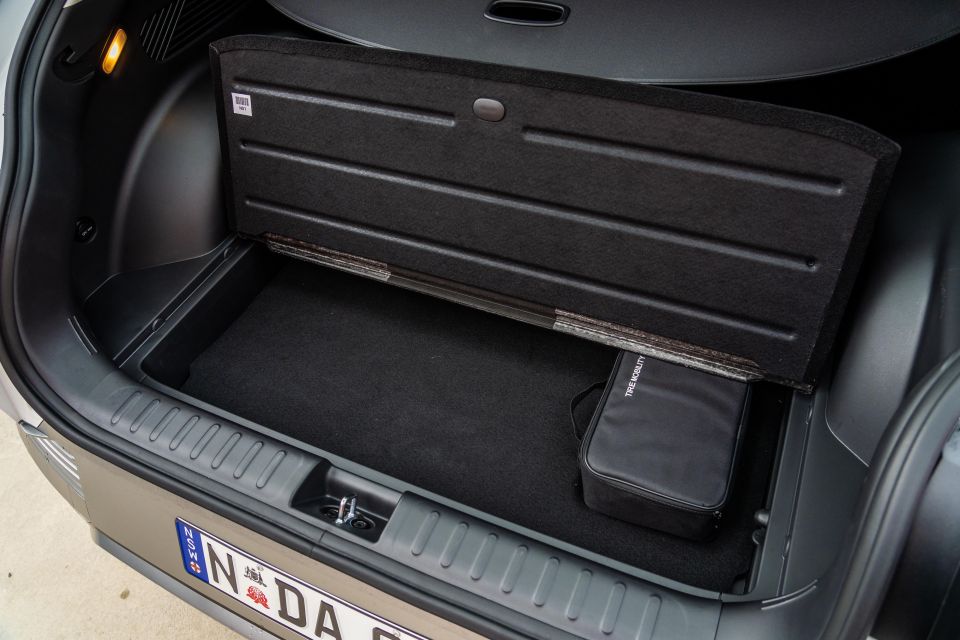
| Dimensions | Hyundai Ioniq 5 |
|---|---|
| Length | 4635mm |
| Width | 1890mm |
| Height | 1605mm |
| Wheelbase | 3000mm |
| Boot space (seats up) | 593L |
| Boot space (seats folded) | 1653L |
| Front boot space | 57L |
As the cheapest model in the Ioniq 5 lineup, the Standard Range RWD has a smaller battery pack.
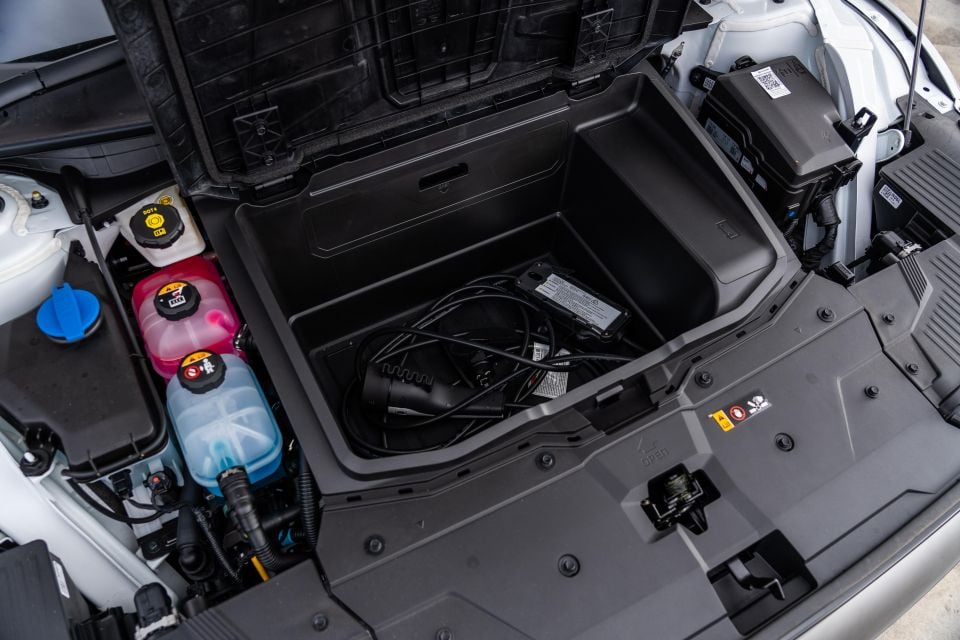
| Model | Hyundai Ioniq 5 Standard Range RWD |
|---|---|
| Drivetrain | Single-motor electric |
| Battery | 53kWh lithium-ion (usable) |
| Power | 125kW |
| Torque | 350Nm |
| Drive type | Rear-wheel drive |
| Weight | 1910kg (tare) |
| Claimed range | 384km (WLTP) |
| Observed energy consumption | 16.5kWh/100km (equiv. 321km range) |
| Max DC charge rate | 270kW |
Like all E-GMP products in the Kia and Hyundai worlds, the base Ioniq 5 can charge at up to 270kW plugged into a suitable public DC fast charger.
If you’re charging more slowly at home, it’s worth looking into the impact on your home and contents insurance of plugging in every night.
To see how the Hyundai Ioniq 5 compares with its rivals, use our comparison tool.
The Ioniq 5 backs its lounge-like cabin with a suitably relaxed driving experience.
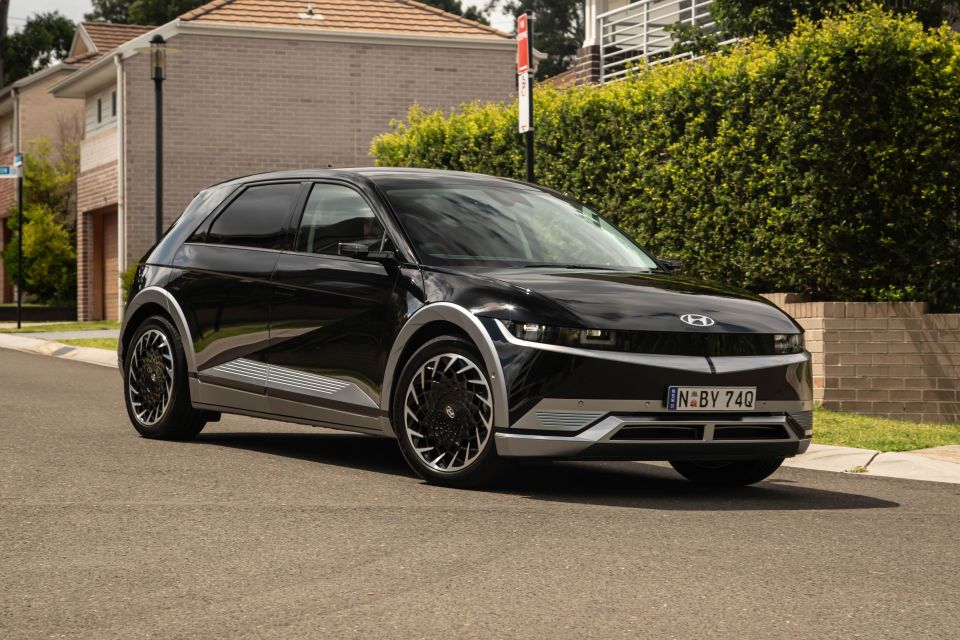
There’s less performance here than in longer-range options, but it still picks up smoothly off the line and gets up to speed effortlessly.
The ride is languid, and the way the accelerator pedal is tuned means you can precisely dole out the motors’ torque for smooth, un-fussed progress. If you want a car that’ll float you home after a hard day at work, few are more relaxing for the price.
Even this base model has a very luxurious feeling; one that wouldn’t feel out of place in a car worth double the price.
Hyundai offers a choice of four different brake regeneration levels, including an “iPedal” mode that allows for one-pedal driving.

You can flick through the modes using the paddles behind the wheel, but you can’t set one-pedal mode as your default – it needs to be selected each time you take the Ioniq out of park. It’s an oversight that’s replicated across the Hyundai and Kia electric car ranges.
Flicked into iPedal mode, the Ioniq quickly becomes natural to drive in the city. The steering is light and fluid, which means there’s a bit of arm-twirling required in tight spaces.
It’s in keeping with the car’s plush feel, but it does combine with the long wheelbase (longer than a Palisade) to make the Ioniq 5 drive bigger than the average mid-sized SUV.
Out on the highway, the Hyundai feels very grown up. There’s minimal wind and tyre noise, and its plush suspension means on smooth roads you just hum comfortably along. Our single-motor model is impressively efficient on the open road.
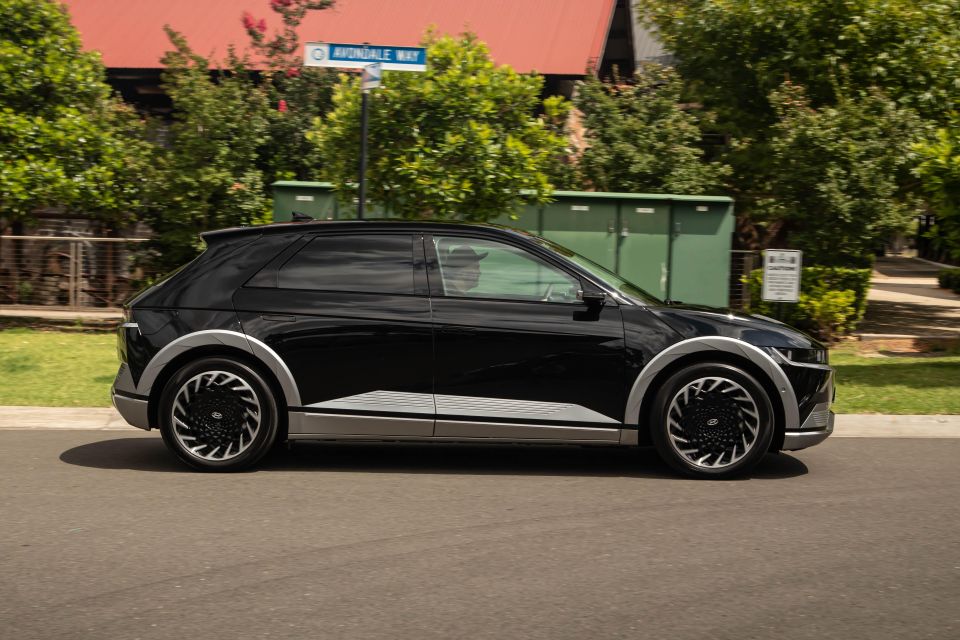
The only real chink in its armour is the way it behaves on undulating country highways, where the relaxed suspension and chunky body combine to make the Ioniq feel a bit like a boat.
It takes one, two movements to settle after big crests or dips, and successive bumps expose the slightly-too-loose body control.
Hyundai has actually updated the Ioniq 5 since its debut to feature a more sophisticated suspension tune – and the changes have made a difference – but it’s still on the looser side. Although the long-legged, languid ride is nice, we’d love the car to feel more controlled at higher speeds.
Hyundai’s active driver assists are a mixed bag. The adaptive cruise control and lane-keeping assist are both smooth and smart, but the lane-centring system – which takes a more hands-on approach to positioning the car, rather than only intervening when you stray – is too hands on for my liking.
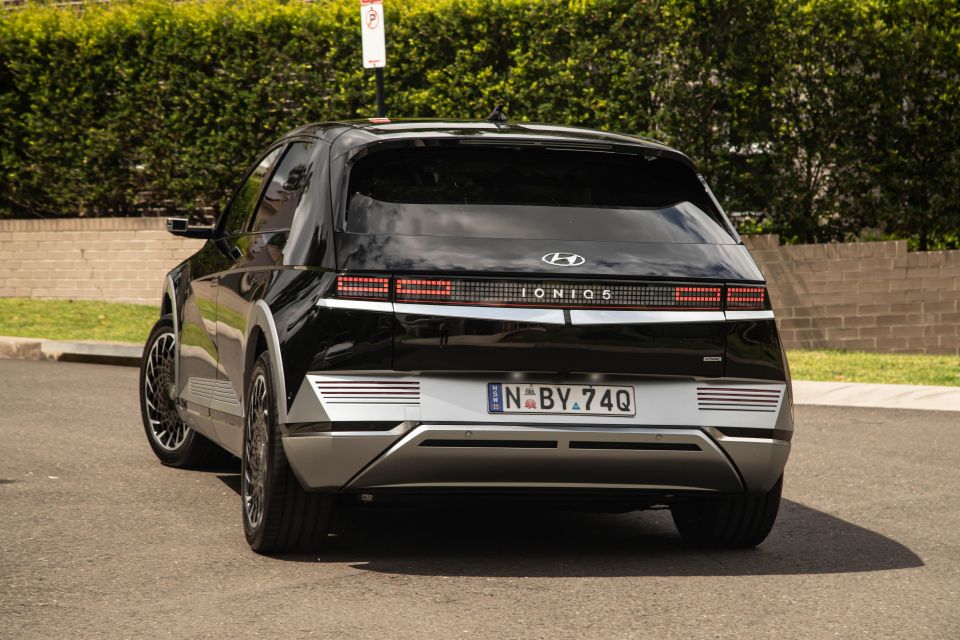
Where expert car reviews meet expert car buying – CarExpert gives you trusted advice, personalised service and real savings on your next new car.
It’s also a shame the Ioniq 5 has been updated to feature Hyundai’s speed limit warning system, which beeps incessantly at you if you drift over the limit… or if it thinks you’re over the limit when you’re not.
It can’t be permanently disabled, and instead automatically activates every time you start the car.
On test here is the entry-level Ioniq 5 Standard Range RWD.
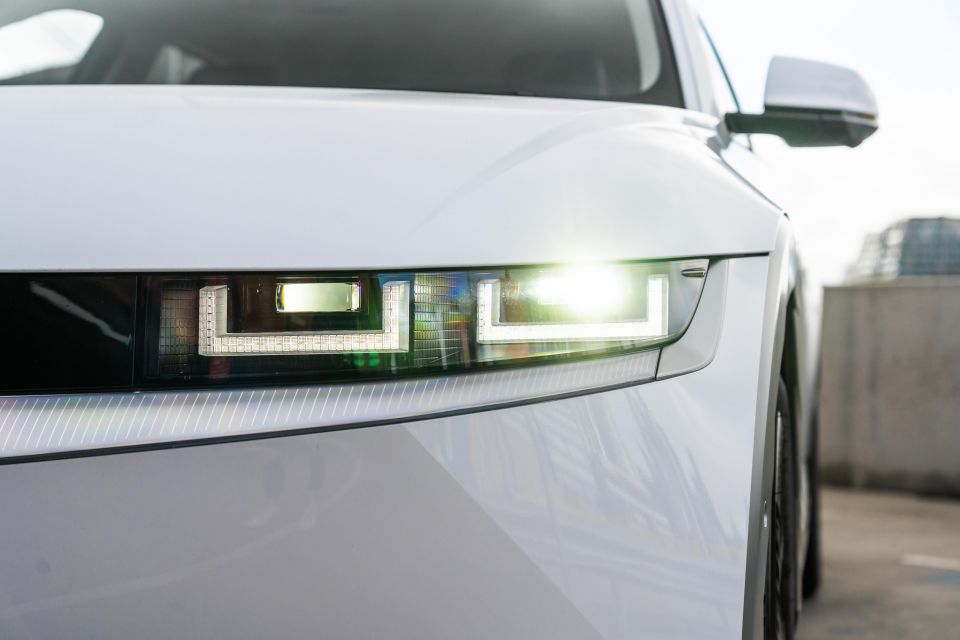

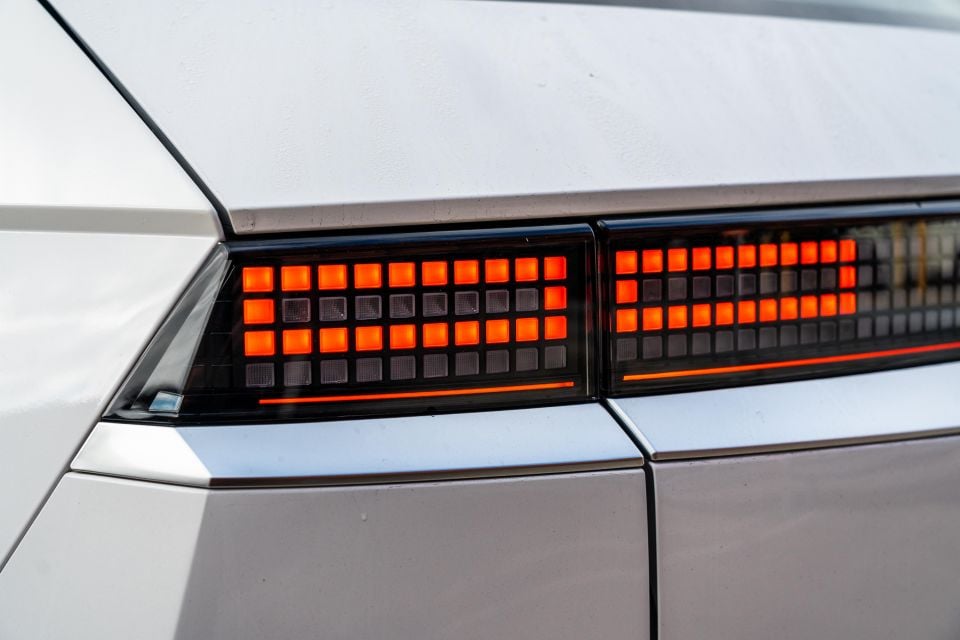
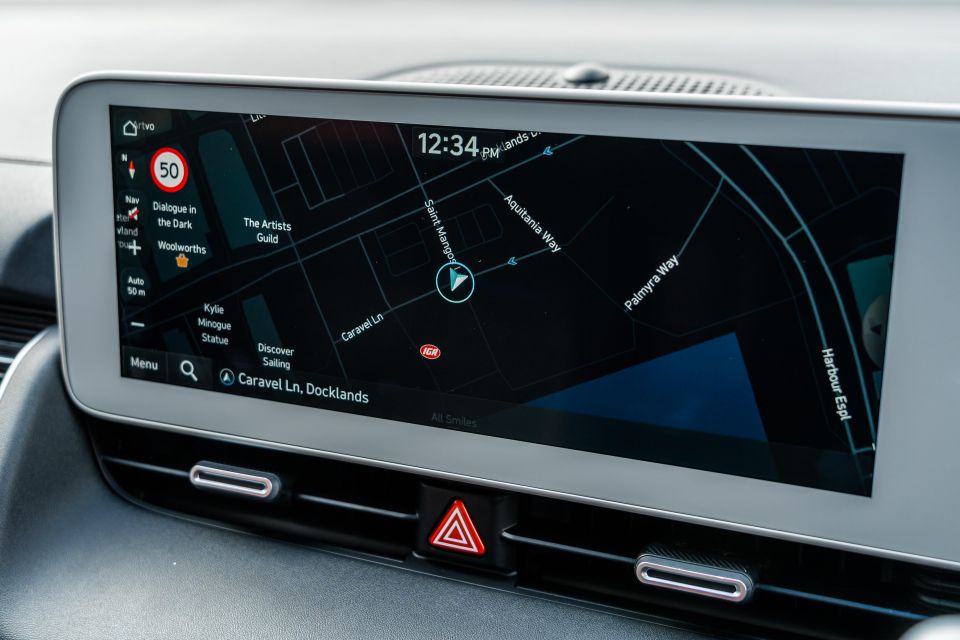
Hyundai Ioniq 5 highlights:
The Hyundai Ioniq 5 has a five-star ANCAP safety rating, which is based on testing conducted in October 2021.
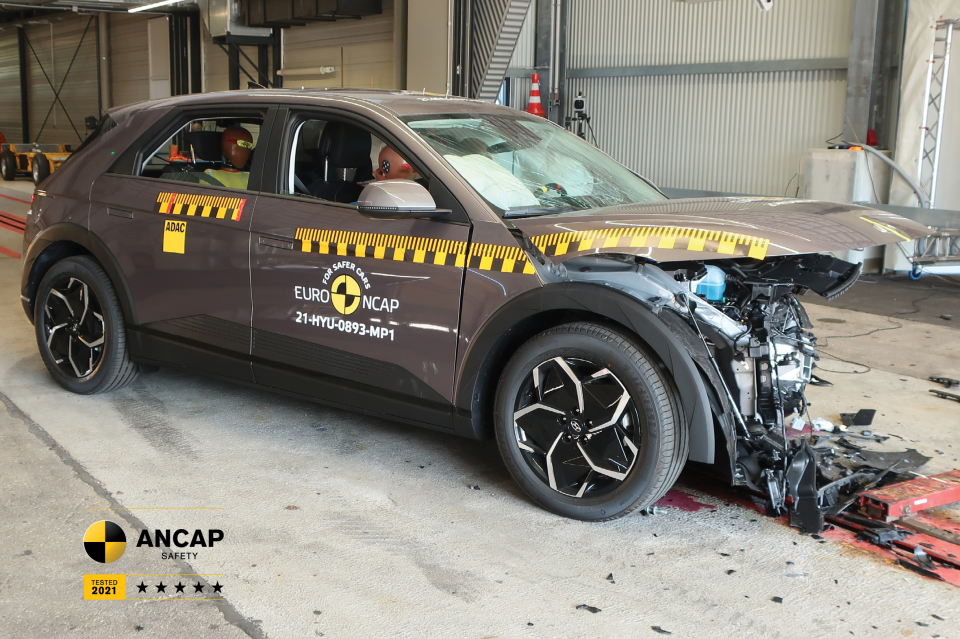
It earned its five-star rating on back of a 88 per cent score for adult occupant protection, 87 per cent for child occupant protection, 63 per cent for vulnerable road user protection, and 89 per cent for safety assist.
Standard safety equipment includes:
The frontal autonomous emergency braking (AEB) feature, which Hyundai calls Forward Collision-Avoidance Assist, includes the following functionality:
The Ioniq 5 has the same warranty as the broader Hyundai range in Australia.
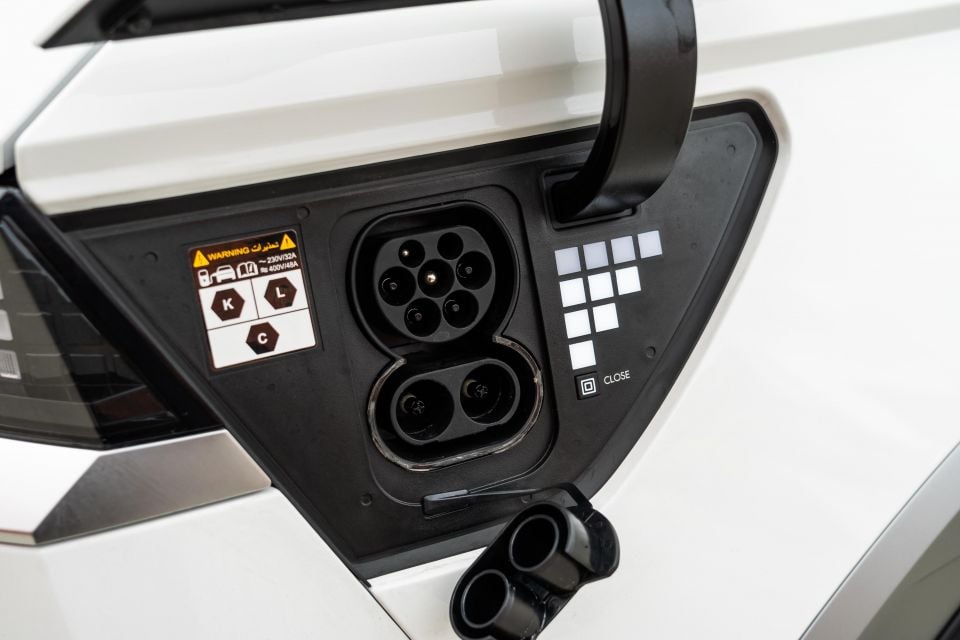
| Ownership Program | Hyundai Ioniq 5 |
|---|---|
| Warranty | 5 years, unlimited kilometres |
| EV battery warranty | 8 years, 160,000km |
| Service intervals | 24 months, 30,000km |
| Total service cost – 6 years | $2230 |
Buy your new car without the stress. It's fast, simple and completely free.

Great service from Travis and team, second time I have used this business would not hesitate to recommend them to anyone
Craig C.
Purchased a Ford Ranger in Sunshine Coast, QLD
CarExpert helped Craig save $7,224 on his Ford Ranger, now let us save you on your next new car.
Get your BEST priceThe Ioniq 5 remains an interesting, and mostly enjoyable take on the electric SUV formula.
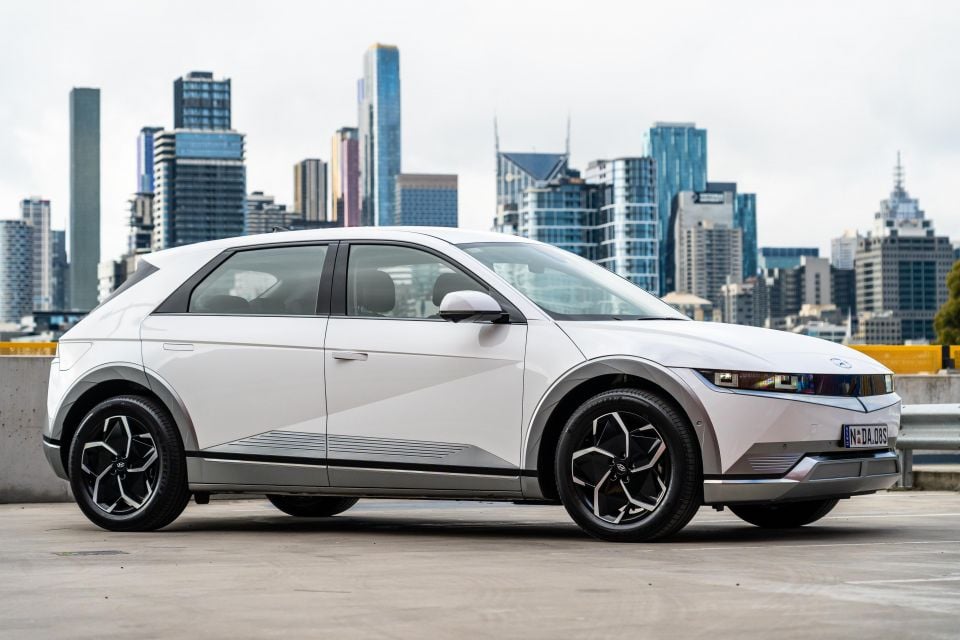
The good? Although the slightly awkward boot isn’t perfect, the cabin is otherwise family friendly, and the relaxed suspension setup combines with smooth, silent electric power to make for a lovely commuter.
With around 320km of real-world range, it’s probably not a like-for-like replacement for your existing mid-sized SUV if you’re a road trip family… but there is enough on offer for most family driving.
This base model also comes pretty generously equipped, even if the Tesla Model Y has adjusted what we expect for the price in 2024. We’d be holding out for the updated model coming later this year, though.
Although it might not bring more range in the base model, it will come with a tech suite more befitting a car with the head-turning hero status of the Ioniq 5 on the outside.
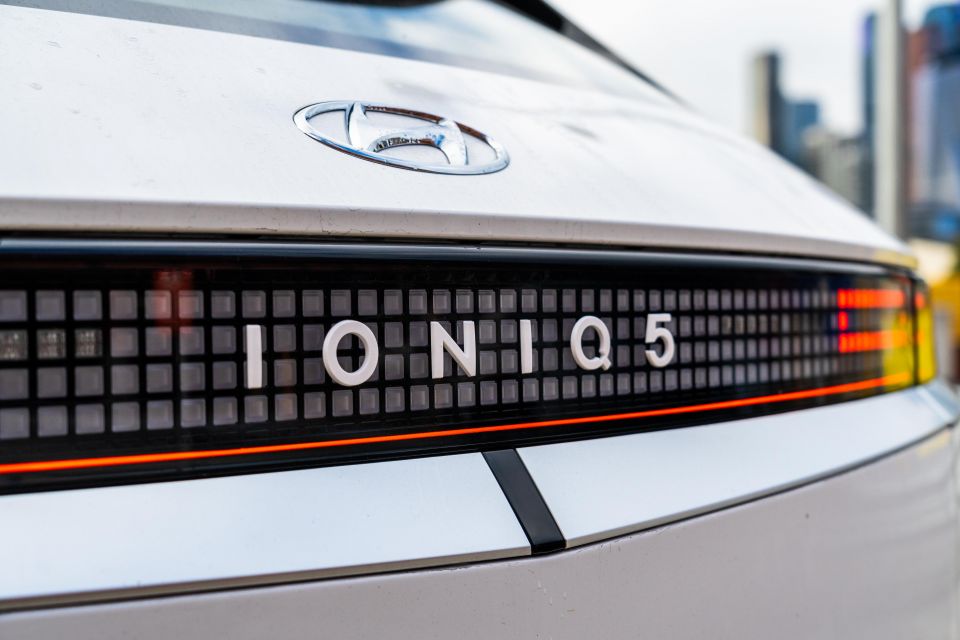
Click the images for the full gallery
MORE: Buy a Hyundai Ioniq 5 MORE: Everything Hyundai Ioniq 5
Where expert car reviews meet expert car buying – CarExpert gives you trusted advice, personalised service and real savings on your next new car.
Scott Collie is an automotive journalist based in Melbourne, Australia. Scott studied journalism at RMIT University and, after a lifelong obsession with everything automotive, started covering the car industry shortly afterwards. He has a passion for travel, and is an avid Melbourne Demons supporter.


Andrew Maclean
1 Month Ago
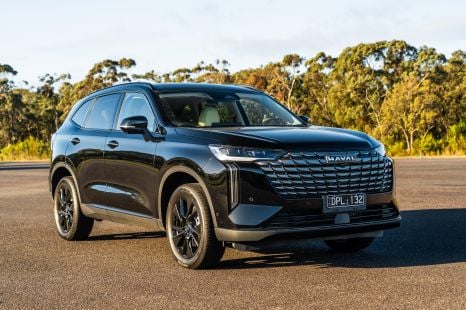

Josh Nevett
1 Month Ago
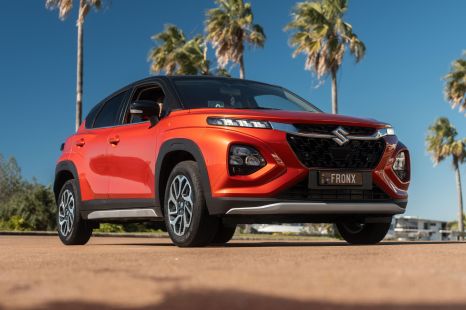

William Stopford
1 Month Ago
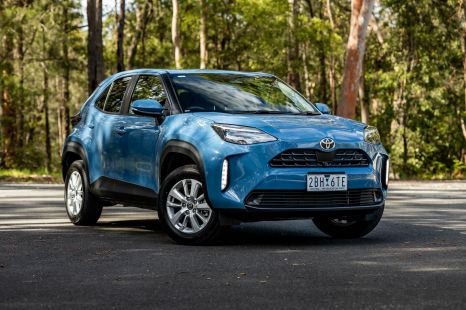

Matt Campbell
1 Month Ago
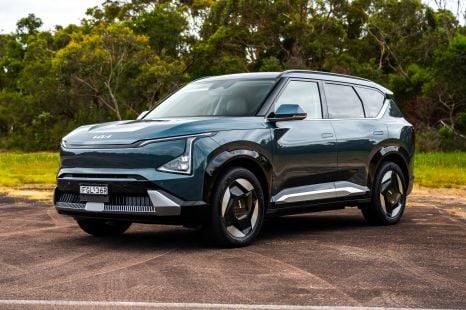

James Wong
26 Days Ago
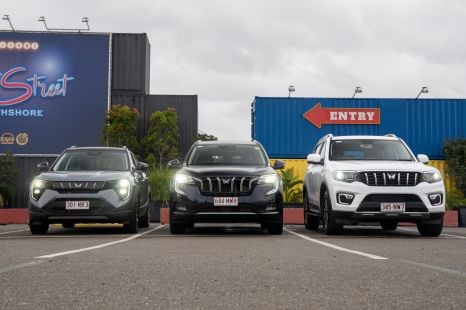

CarExpert.com.au
19 Days Ago